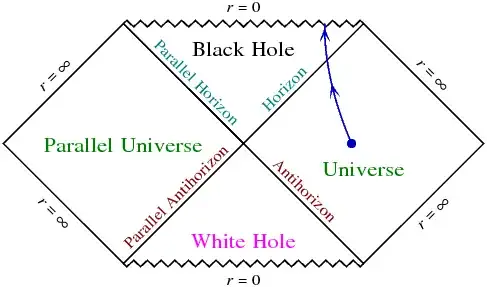In the Kerr metric
$$
ds^2=\left(1-\frac{2Mr}{\rho^2}\right)dt^2+\frac{4Mar\sin^2\theta}{\rho^2}dtd\varphi-\frac{\rho^2}{\Delta}dr^2-\rho^2d\theta^2-\left(r^2+a^2+\frac{2Ma^2r\sin^2\theta}{\rho^2}\right ) \sin^2\theta d\phi^2
$$
with
$$
\rho^2=r^2+a^2\cos^2\theta,\quad \Delta=r^2-2Mr+a^2
$$
the coordinate $r$ can be extended to negative values.
This because a variable which behaves like a radius can be built as
$$
R=r\sqrt{1+a^2\sin^2\theta /r^2}
$$
and only asymptotically far from the source we have that $R\sim r$.
Everywhere else the coordinate $r$ is just a coordinate, and therefore can take also negative values.
- There is a physical meaning to this? Or is just a mathematical consequence of the form of the metric?
The extension to negative value of $r$ is possible also on other spacetimes, such as Simpson-Visser, which looks a lot like Schwarzschild metric, but also in this case we can expand to $r=0$ and negative $r$, since the metric is regular for any $r$.
- Why can't we then expand Schwarzschild to negative $r$, but without $r=0$? (just from a mathematical point of view)
and
- Given an arbitrary metric, when can we expand it to negative $r$?
